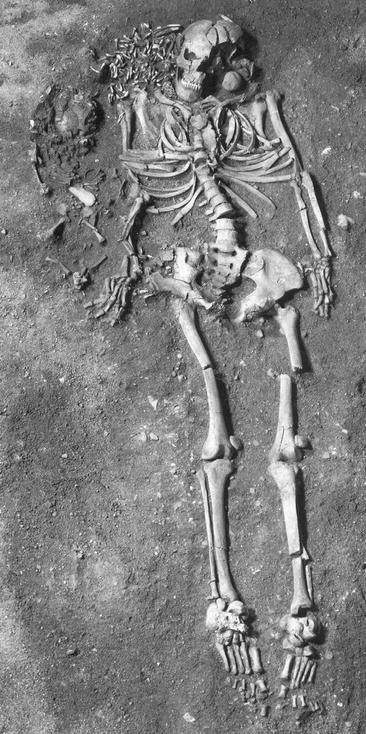Archaeologists have uncovered a remarkable burial site in Vedbaek, Denmark, dating back to 7000-6000 years ago. The burial contains the remains of a young woman, believed to be around 20 years old at the time of her death, and her newborn baby. The discovery is significant because it provides a rare glimpse into the burial practices and customs of ancient societies.
 The burial site is particularly intriguing because of the objects found alongside the woman and her child. By the woman’s head were 200 red deer teeth, which are believed to have been a symbol of status or wealth in the community. The child was cradled in the wing of a swan, which is a highly unusual burial position. The swan was also found with a flint knife at its hip, which suggests that it may have been a symbol of protection or a talisman to accompany the child into the afterlife.
The burial site is particularly intriguing because of the objects found alongside the woman and her child. By the woman’s head were 200 red deer teeth, which are believed to have been a symbol of status or wealth in the community. The child was cradled in the wing of a swan, which is a highly unusual burial position. The swan was also found with a flint knife at its hip, which suggests that it may have been a symbol of protection or a talisman to accompany the child into the afterlife.
The discovery of the burial site has led to much speculation about the circumstances surrounding the woman and her child’s death. It is believed that they may have died together during childbirth, which was a common occurrence in ancient societies. The fact that the child was buried with the mother suggests that the community placed a high value on the bond between mother and child, even in death.

The Vedbaek burial site is just one example of the fascinating discoveries that archaeologists are making about ancient societies. By studying these ancient remains and artifacts, we can gain a better understanding of the customs, beliefs, and practices of our ancestors. The discovery of the young woman and her child is a poignant reminder of the fragility of life and the enduring bond between mother and child, which transcends time and culture.









